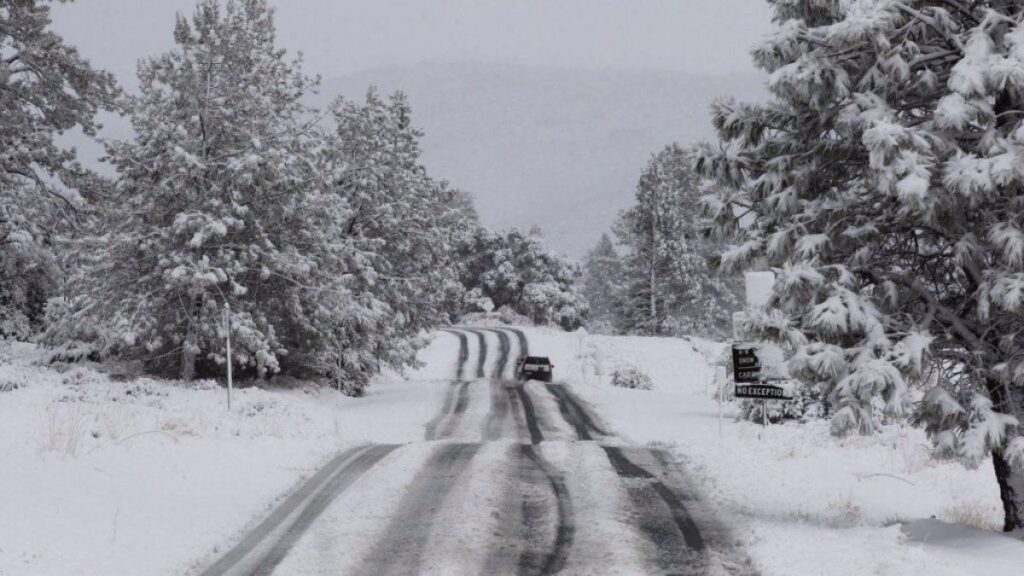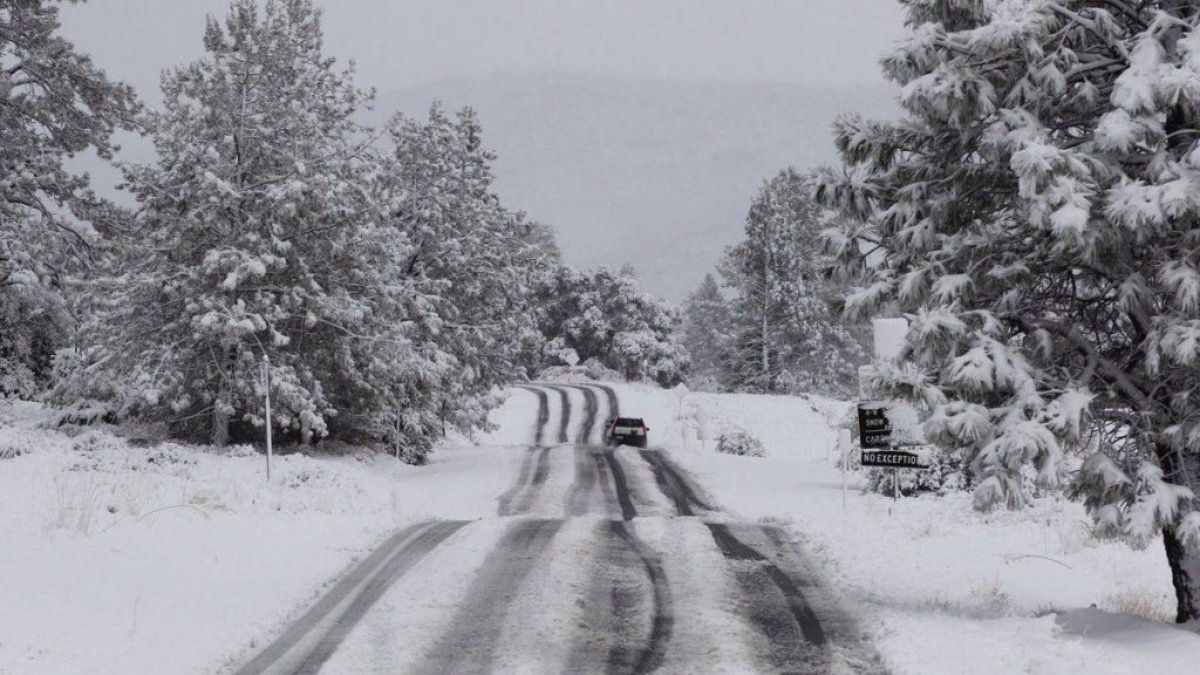No, it does not snow in San Diego. Snowfall in the city in the winter season is extremely rare. The city’s coastal location and Mediterranean climate contribute to its mild weather, making it unlikely to experience significant snowfall.
Occasionally, San Diego only sees snow flurries once every several decades. Even when snow does occur, it is often limited to higher elevations and quickly melts without causing any major disruption to daily life.
While San Diego is known for its sunny and warm weather, those seeking a snowy experience can explore nearby mountain destinations that receive regular snowfall during the winter months.

San Diego is known for its beautiful beaches, year-round sunshine, and mild climate. It is a popular tourist destination in Southern California. Visitors and residents alike often wonder if snowfall graces this coastal city.
In this article, we will explore the topic of snow in San Diego, including historical snow events, the region’s climate, and the chances of experiencing a winter wonderland in America’s Finest City.
Location Overview
Located on the southern coast of California, San Diego is a vibrant city known for its stunning beaches, warm climate, and diverse culture. The city is situated near the border with Mexico and is the second-most populous city in California and the eighth-most populous city in the United States.
Geography and Climate of San Diego
San Diego is nestled in a picturesque setting, bordered by the Pacific Ocean to the west and surrounded by rolling hills and canyons. The city covers an area of approximately 372 square miles, offering a variety of landscapes, from coastal plains to rugged mountains.
San Diego enjoys a Mediterranean climate while experiencing an average annual temperature ranging from 57 Fahrenheit in winter to 77 Fahrenheit in summer. San Diego’s climate is often described as “perfect.”
The average temperature throughout the year makes San Diego ideal for outdoor activities and beachgoers. However, the Mediterranean climate also means that extreme weather events like snowfall are relatively rare.
Historical Snowfall Record
While San Diego is renowned for its sunny weather, it has experienced a few notable snow events throughout its history. It was an extraordinary event that delighted residents and visitors who had the chance to witness the usually sunny city transformed into a snowy land.
The most recent significant snowfall occurred on December 13, 1967, when a powerful winter storm brought several inches of snow to various parts of the city, including downtown San Diego and coastal areas.
Winter Season & Snowfall Pattern
Snowfall in San Diego is exceptionally rare due to its coastal location and moderate climate. The city’s proximity to the Pacific Ocean helps regulate temperatures, preventing significant snow accumulation.
On average, San Diego experiences snow flurries only once every several decades. Even when snow does occur, it is often limited to higher elevations and quickly melts, rarely causing any disruption to daily life.
Locations to Enjoy Snow
The city offers an array of other outdoor activities and attractions year-round. With its pristine beaches, a world-class zoo, numerous parks, and vibrant cultural scene, San Diego provides endless opportunities for exploration and enjoyment.
Although San Diego does not receive significant snowfall, visitors and residents can embrace the unique Mediterranean climate. Engage in outdoor pursuits such as hiking, surfing, sailing, or simply lounging on the beach.
However, residents and visitors seeking a winter experience have options within a few hours’ drive. Here are a few destinations near San Diego where you can embrace the snow:
- Mount Laguna
Located in the Cleveland National Forest, Mount Laguna is about an hour’s drive east of San Diego. With an elevation of over 6,000 feet, it receives regular snowfall during the winter months. You can enjoy various winter activities in this picturesque mountain area.
Known for its charming small-town atmosphere and apple orchards, Julian is approximately an hour east of San Diego. This historic mountain town experiences occasional snowfall during the winter. You can wander through the quaint streets, visit local shops, and warm up with a cup of hot apple cider.
- Palomar Mountain
Situated northeast of San Diego, Palomar Mountain offers a serene escape and the chance to enjoy snow-covered landscapes. The mountain’s peak reaches over 6,100 feet and receives snow in winter. Visitors can explore Palomar Mountain State Park, hike scenic trails, and enjoy the snowy surroundings.
- Mount San Jacinto
Located near Palm Springs, Mount San Jacinto is a bit farther from San Diego but well worth the trip for snow enthusiasts. The mountain’s summit stands at over 10,800 feet, providing ample opportunities for winter activities.
Take the Palm Springs Aerial Tramway to ascend to the mountain’s peak and enjoy breathtaking views, hiking trails, and snow play during the winter season.
- Big Bear Lake
Situated in the San Bernardino Mountains, Big Bear Lake is a popular winter destination approximately three hours northeast of San Diego. With its ski resorts, including Bear Mountain and Snow Summit, this alpine retreat offers skiing, snowboarding, snowshoeing, and other winter sports.
Remember to check weather and road conditions before heading to these destinations, as accessibility and snow levels can vary.
Factors Influencing Snowfall
Several factors influence the rarity of snowfall in San Diego:
- Proximity to the Coast
San Diego’s coastal location and the moderating effect of the Pacific Ocean prevent extreme cold temperatures required for significant snowfall.
- Mediterranean Climate
The city’s mild, wet winters and limited precipitation make snowfall less likely.
- Temperature Inversions
Coastal areas experience temperature inversions that inhibit snow formation by preventing the mixing of warm and cold air masses.
- Elevation
Higher elevations near San Diego, such as the nearby mountains, have a better chance of receiving snowfall compared to the city itself.
- Storm Tracks
Winter storms tend to track farther north, impacting areas like the Sierra Nevada Mountains more than San Diego.
- El Niño and La Niña
These climate patterns can influence precipitation, with El Niño potentially increasing snowfall chances and La Niña bringing drier conditions.
Snowfall is not a common occurrence in San Diego due to its coastal location, Mediterranean climate, and other geographical and meteorological factors.
Conclusion
San Diego’s reputation for sun and sand holds true for the most part, as snowfall is an infrequent event in this coastal city. While San Diego rarely sees snow, the occasional winter wonderland experience has been known to surprise residents and visitors.
Nonetheless, those seeking a snowy retreat can venture to nearby mountain destinations for a taste of winter activities. San Diego’s mild climate and abundant attractions ensure a delightful experience year-round, regardless of the weather.
So, while you may not encounter snowflakes in San Diego, there are plenty of other reasons to enjoy this sunny slice of paradise.
